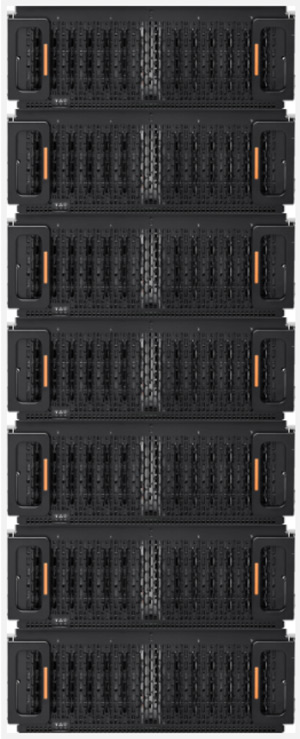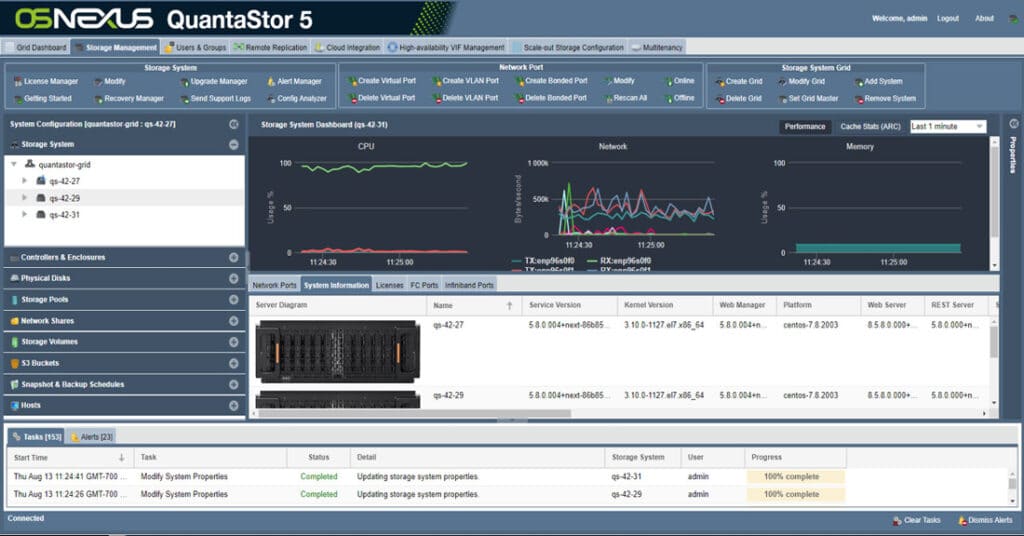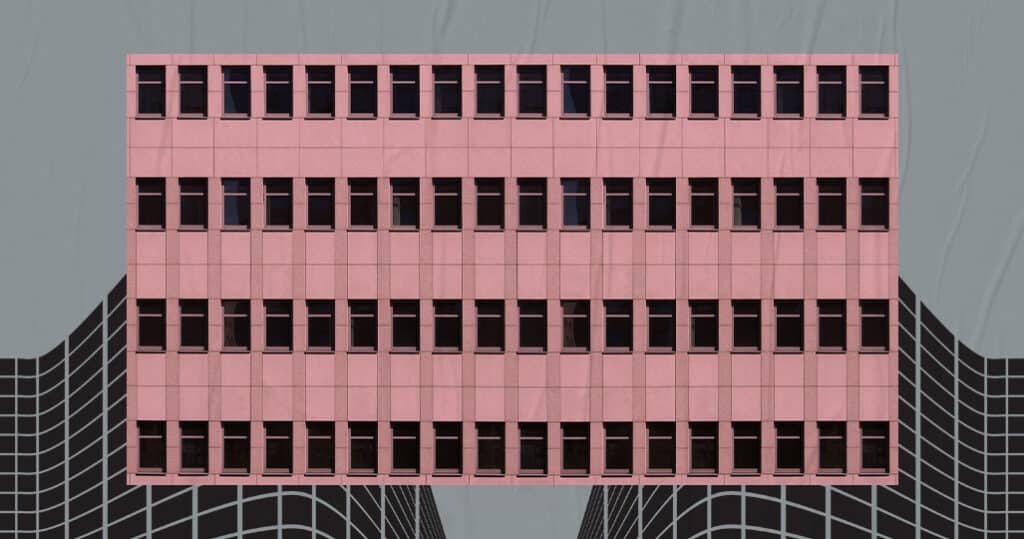Traditional storage arrays (feature-rich, powerful, and proprietary) have seen a revolution over the last decade with the dawn of Software-Defined Storage (SDS). I spoke with Western Digital partner Steven Umbehocker, CEO & Founder of OSNEXUS Corporation, to learn more about the state of SDS today, and how businesses and MSPs are taking advantage of SDS to better scale applications and workloads to meet today’s data demands.
[ Learn how Western Digital and OSNEXUS enable new levels of IT agility with a petabyte-scale software-defined solution ]
What’s your particular take on software-defined storage?
Steven Umbehocker: My take on SDS is that it needs to help organizations increase security and manage their storage in a way that enables IT staff to see it all and manage it all as if it was one system. This eliminates silos of storage that go underutilized and enables organizations to apply security policy to everything at once.
To that end we at OSNEXUS developed what we refer to as a ‘storage grid’ technology in our QuantaStor platform. A storage grid combines all the systems across on-premises, public and private clouds into one unified management control plane. Every system that’s part of a given storage grid provides the web user interface (WUI) so IT staff can login from anywhere and provision storage and do management operations.
Within a given storage grid one can create multiple storage clusters and clusters that span sites. IT administrators can provision storage from anywhere just by logging into any QuantaStor system via their web browser. QuantaStor’s patented RBAC system enables security administrators to limit management users to specific functions and resources following the ‘principle of least privilege’ essentially implementing multi-tenancy within their own organization.
What’s your view on the importance of open-source in software-defined storage?
Steven Umbehocker: QuantaStor integrates with open-source storage technologies like Ceph in our “scale-out” clusters and OpenZFS in our “scale-up” clusters and that has many benefits. Benefits like lower solution costs, long term innovation, open data formats, greater platform coverage, and a large user and developer base around the technology which raises the quality bar because everyone is using it.
The main drawback of using the open-source technologies is that although performance is very good, SDS platforms using proprietary filesystem technologies are able to narrow their focus to the needs of a specific verticals such as high-performance computing (HPC) and deliver some amazing numbers.
Is SDS being heavily used by cloud service providers?
Steven Umbehocker: Yes, the cloud service providers (CSPs) and managed service providers (MSPs) are all using commodity servers and storage. This is perfect for SDS platforms as they’re designed to run on just that. This enables MSPs and CSPs to scale at lower costs and rapidly adopt the latest new technologies in storage, networking, and compute to build ever faster SDS systems. QuantaStor is leveraged by some of the largest CSPs and MSPs for a variety of use cases because of these efficiency gains, scalability and because it’s so easy for them to automate.
[ WEBINAR: Easy Planning for Software-Defined Storage ]
“Scale-up” vs. “scale-out”
I think there is another definition we should explain: the difference between “scale-up” and “scale-out” architectures.

Steven Umbehocker: There are two primary architectures that dominate the storage industry today for software-defined storage: “scale-out” and “scale-up”.
Scale-out solutions are called “scale-out” as they’re designed to grow in capacity and performance by adding more servers to a cluster of servers on demand. These systems can typically grow without bounds to upwards of 100PB or more per cluster. The main challenge with scale-out storage systems is the initial investment cost. Typically 6x or more servers are required to start so this makes for a large upfront investment and along with more servers comes a larger rack footprint and additional network ports that also add to the overall cost of scale-out storage architectures.
Scale-up solutions are called “scale-up” because they are often composed of a cluster of just two servers with one or more attached disk chassis (JBODs/JBOFs). These systems “scale-up” by adding more disk chassis. QuantaStor supports both “scale-out” and “scale-up” storage clusters but in scale-up clusters we prefer to limit the number of storage chassis to 6x per cluster pair of servers (~6PB/cluster) for best performance.
Scale-up systems can create some challenges for organizations that need to grow beyond that as growing requires adding a new cluster each time they hit the scale-up limit. The big benefit is that scale-up configurations only require a pair of servers so the overall initial hardware investment is often much lower than an equivalent sized scale-out cluster. My recommendation is that one’s 3 to 5 year data growth rate expectations for a given application has a total capacity less than 3PB then one should evaluate both scale-up and scale-out options.
QuantaStor addresses the scale-up scalability issue with its storage grid technology as grids can have multiple clusters so one can just deploy more clusters and still manage it all as one. Adding to that, QuantaStor brings to the table some single-namespace features that enable all the systems in a grid to present all the storage shares even though they may be physically located on different pools and clusters.
Easy configurator – scale-up or Scale-out Storage
We recently launched a new landing page and configurator for OSNEXUS QuantaStor deployments using Western Digital JBODs and storage servers (our hybrid storage platforms). What can you share about our work together?
Steven Umbehocker: We’ve enjoyed working with Western Digital on the new solution design and web application. The thing that really makes it easy is that customers and solution architects can simply input a required capacity and their use case and the app will come up with a solid design on the platform of their choice. Additional sliders enable one to estimate the benefits of compression if their data is compressible and to further customize the solution with performance options.

The configurator makes it really easy to explore SDS and understand what pieces should come together for an optimal design. It makes it simple to plan and discuss with various stakeholders when considering SDS solutions.
Western Digital JBODs provide an extremely reliable and valuable hardware foundation that we can trust OSNEXUS’s software to. Together, we deliver a simple and powerful solution that provides unified file, block, and cloud object storage in a distributed storage platform at a fraction of the cost of traditional storage solutions. This empowers customers to retain data longer, protect data more efficiently and reliably and save money by reducing energy, floor space and maintenance requirements.
Check out the configurator and learn more about the partnership here!



